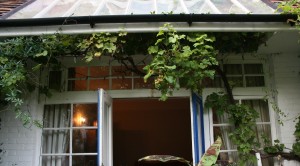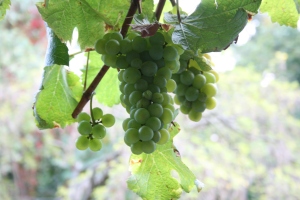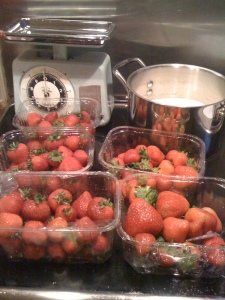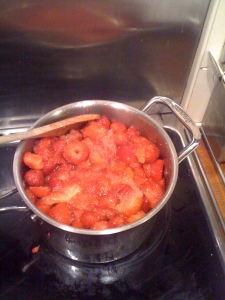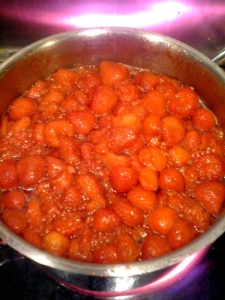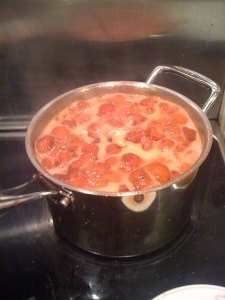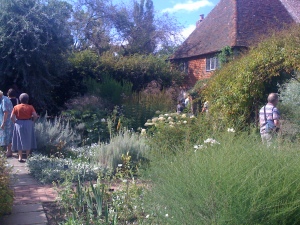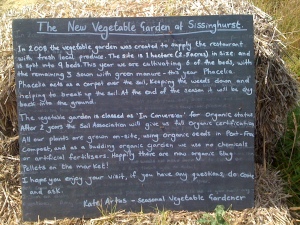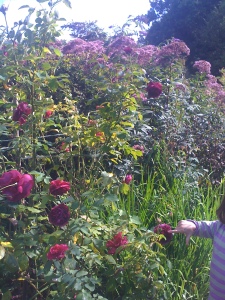I have a confession to make. It is at least a month since I have even got to either allotment - I have just been too busy, too ill or too lazy. I have spent the summer gallivanting around and have loved every minute of shirking my duties. Jamie has been running there as part of his evening run to keep it ticking over, and he had reassured me that they looked okay (ish).
Today I got the shock of my life when I revisited them both. All the crops that I had carefully sown have gone to seed or been overgrown, and generally looked very neglected. This cabbage sums up the damage:
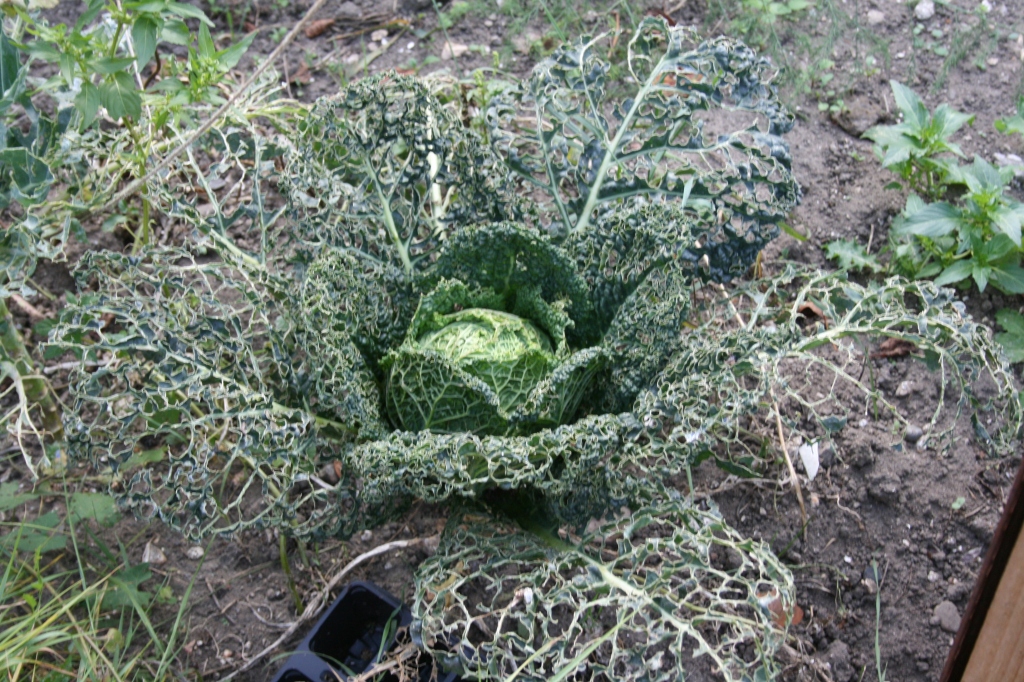
The plot now needs some serious weeding and replanting for next year.
Despite the complete wasteland that the allotment seemed, I was still able to bring home some great picks of the day,which I have rinsed ready to put in the pot later:
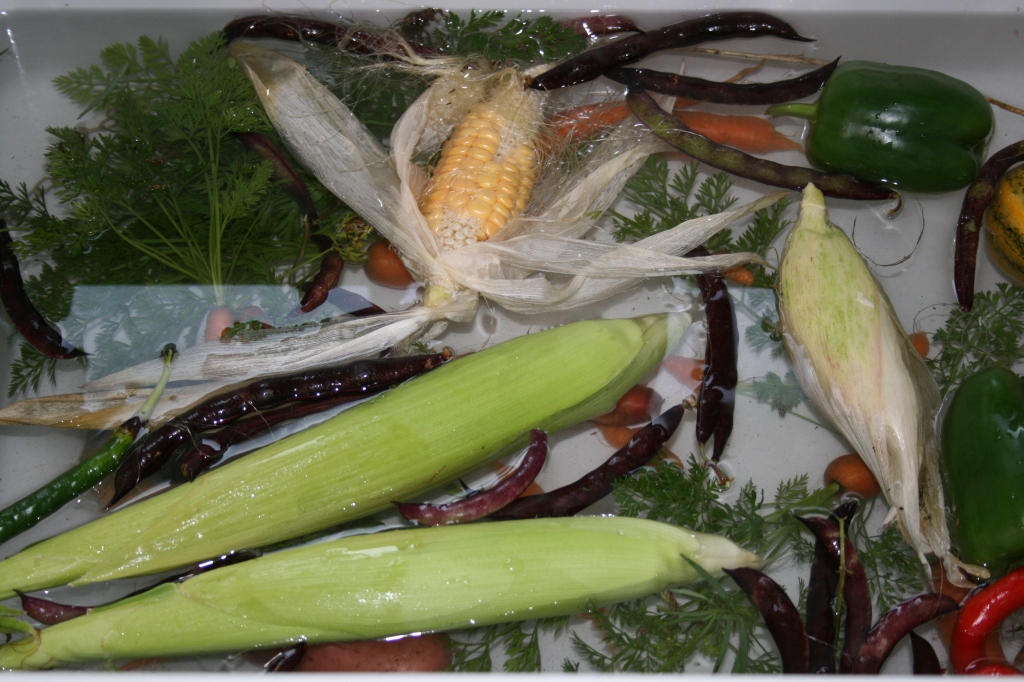
I am going to put the mix of sweetcorn, potatoes, carrots, peppers, chilli and borlotti beans into a huge cooking pot over a bonfire, along with some braising steak, onions, beef stock and some fresh tarragon picked today.
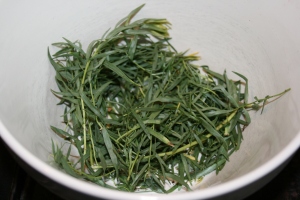
This is all going into a dutch oven on the fire. Watch this space, I will post the results tomorrow, if they were worth a look.

I am going to eat my stew with oven roasted tomato and parmesan bread that I made earlier:
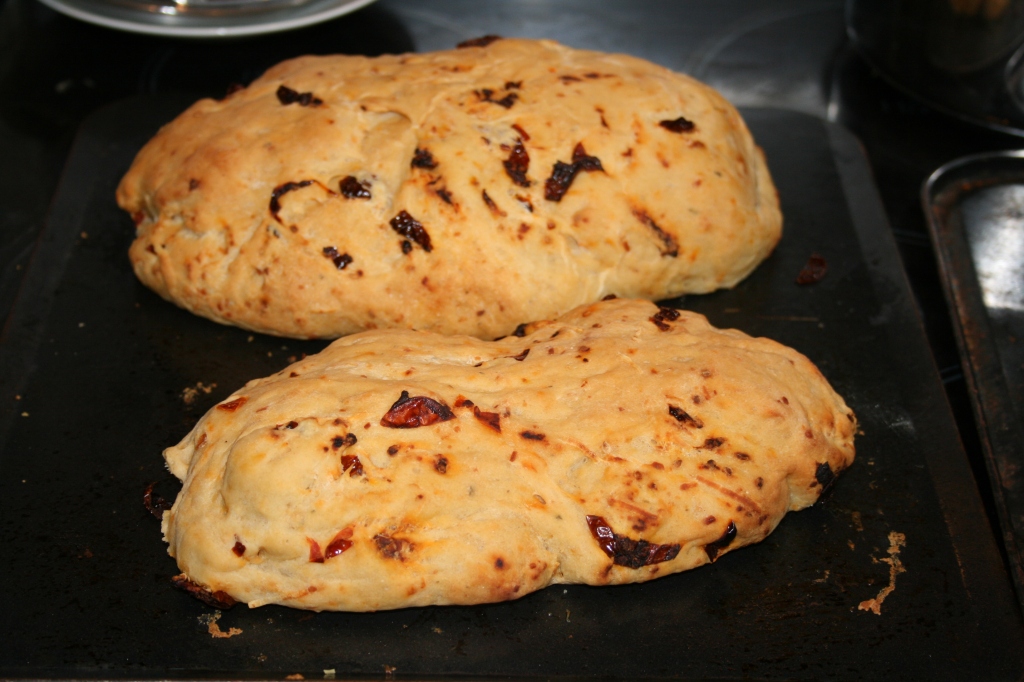
This was made using the tomatoes from the plot a few weeks ago, which had been overnight-roasted according to the recipe on Make Grow Gather. This created the perfect addition to home made bread:
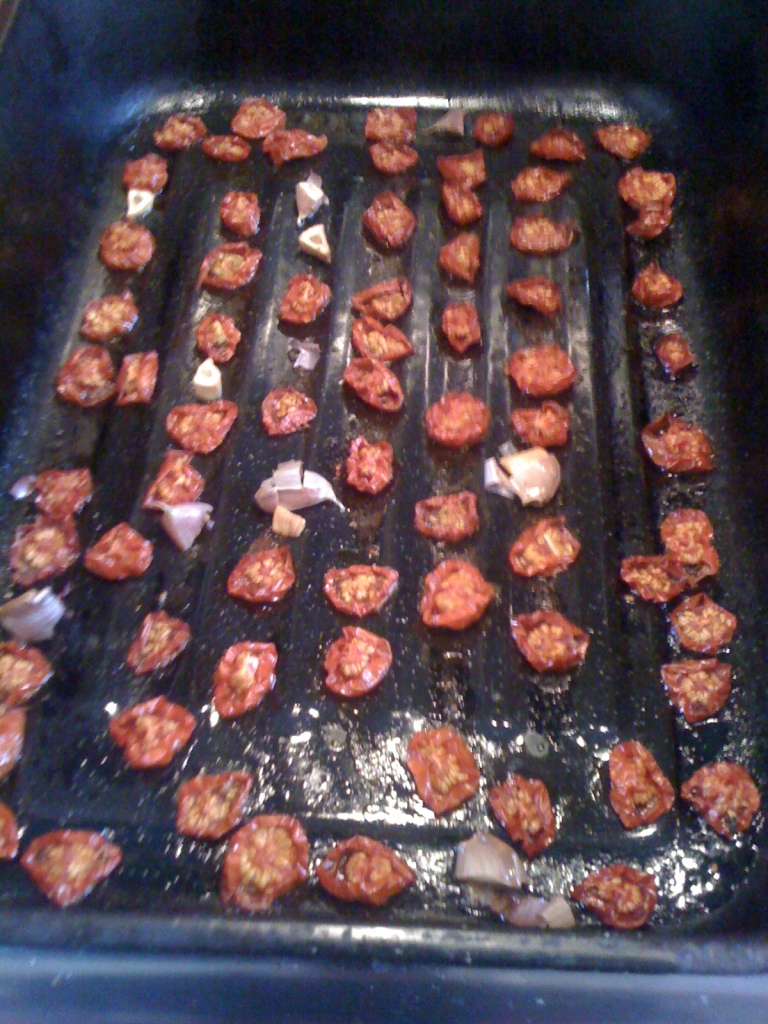
So, two hours later, here we are with food cooking on the fire:
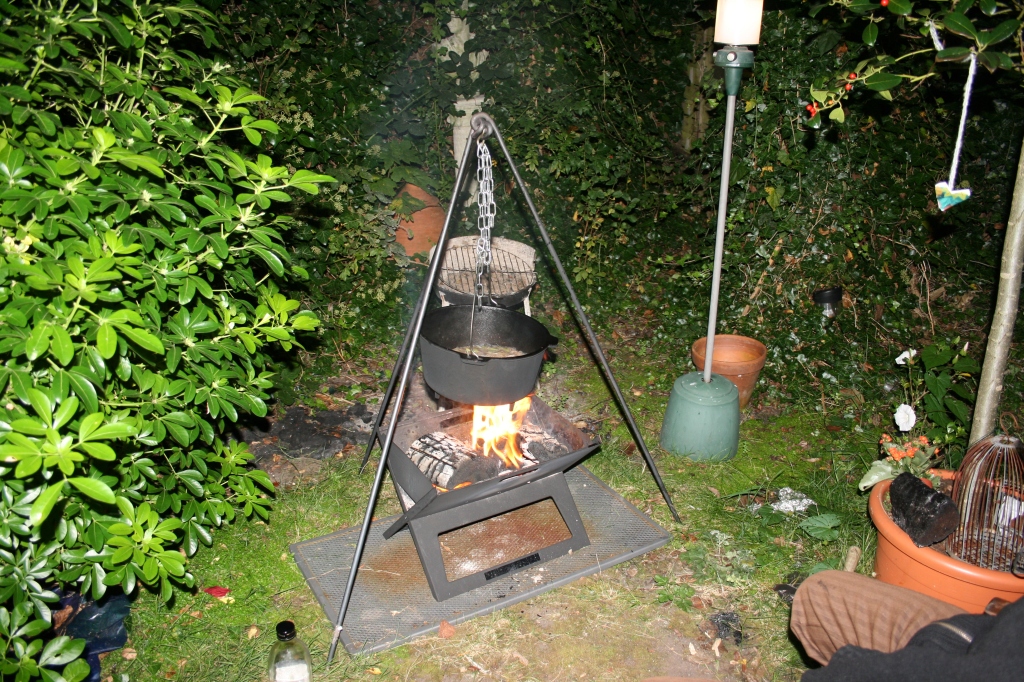
I haven't tasted it yet, but I can't wait:
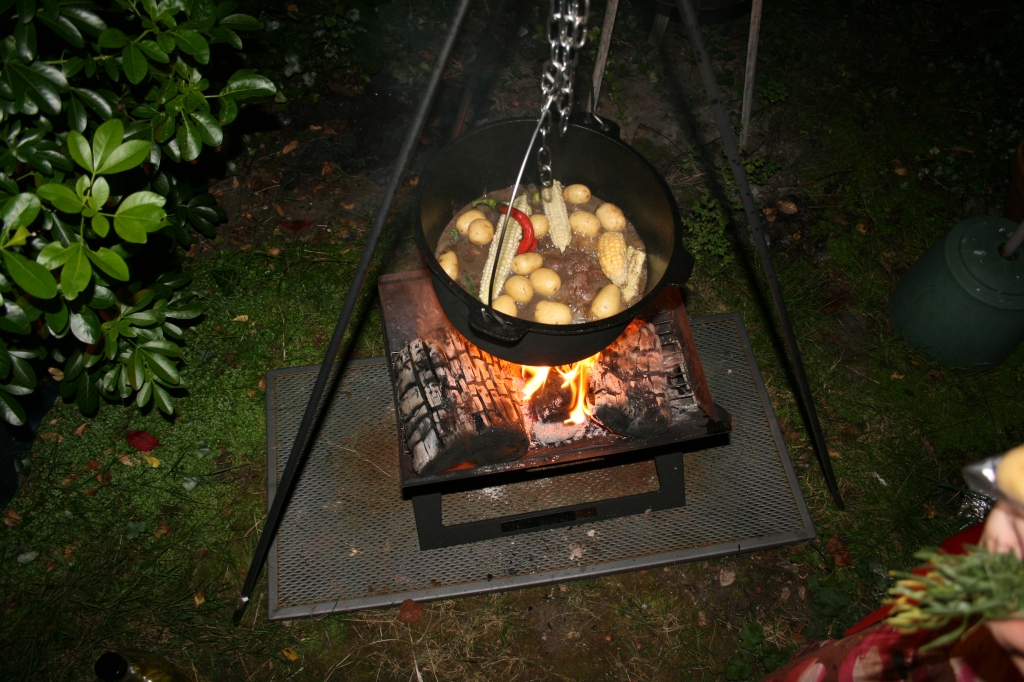
It looks a lot better and browner after a few hours of cooking. Here was the final result. It actually seemed like a real Ray Mears kind of meal, with lots of whole veg and a bit of spice.
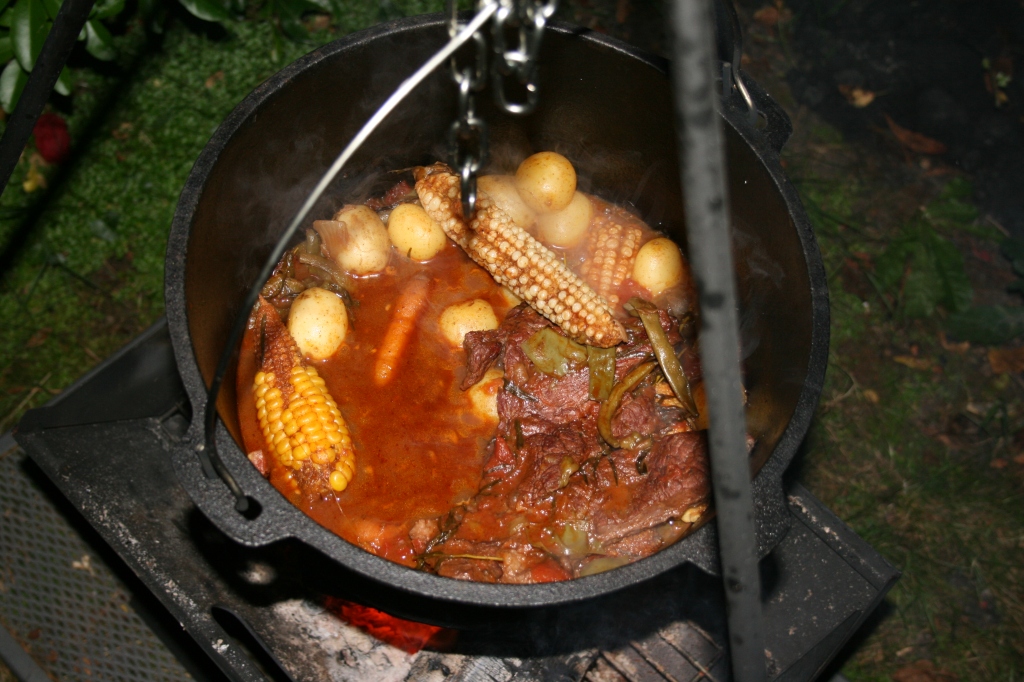
Granted, it still looks pretty grim with the flash on the camera, but it tasted amazing, with a Central American accent, with sweetcorn, Cherokee Trail of Tears beans, chillis, peppers and potatoes.
